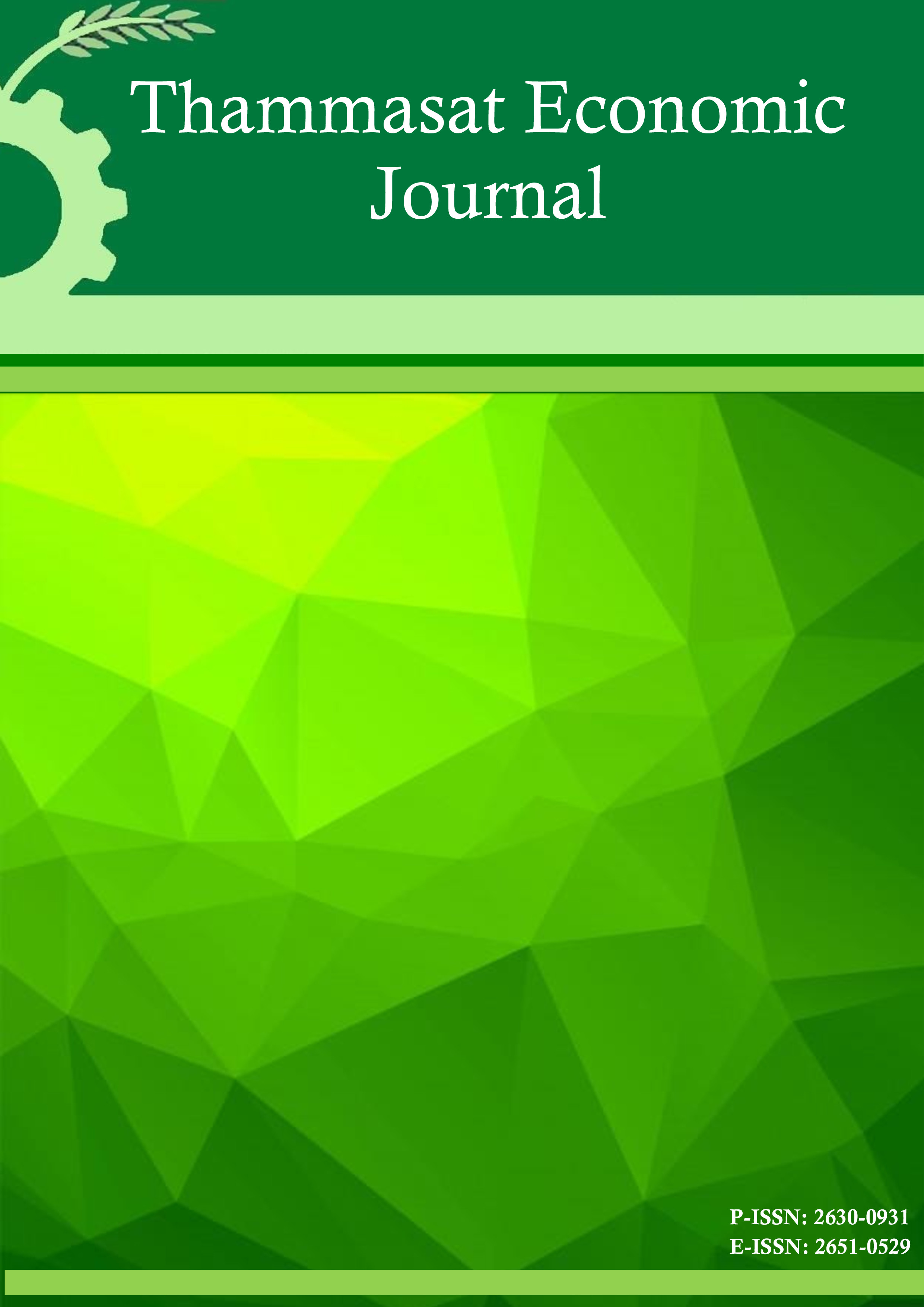Oligopsony in the Tire Industry
A study of its Impacts on the Natural Rubber Industry in Thailand
Abstract
Natural rubber is a significant commodity for producer countries such as Thailand, Indonesia and Malaysia. Its market structure indicates an increasing degree of concentration, from the plantation to the transformation and end product production level that includes tire manufacture. Thus there now exists the potential for oligopsonistic market power in upstream markets. Specific to the natural rubber industry is the potential for its market structure characteristics to be considered at a country level. Given that a few multinational companies in
tire producing industrialized countries import a large fraction of the worlds natural rubber production, they may be capable of exercising oligopsony market power on the small farms of developing countries producing the natural rubber. Thus there is the potential for oligopsony market power and its social welfare distortions to translate into a global level problem, with the possibility that welfare might be shifted from less developed countries producing the natural rubber input to more developed countries producing tires.
An optimality condition is applied to derive an oligopsony/oligopoly market power index based on the Lerner index which defines the degree of market power as the deviation of the input price from its shadow price as measured by the input’s value of marginal product. The derived index can be expressed in a series of estimable elasticities. The model is estimated using four different interpretations of the model’s components. Hence results can be cross checked across four different approaches and transformed from a conventional industry/firm level to a global industry/country level to answer the research question.
To implement the market power index, the global tire demand, the global natural rubber supply and the tire production functions for the USA, France, Japan and Germany are estimated. Data for variables in each equation are analyzed and tested for nonstationarity prior to functional specification. From each individual country data, estimated coefficients are used for hypothesis tests for the existence of oligopsony market power as well as oligopoly market power. If the hypothesis tests reject the null hypothesis of competitive markets, the presence of oligopsony and/or oligopoly market power is indicated. Derived elasticities enable the derivation of corresponding market power indexes specific to each country.
Results imply that the tire industries in USA, France, Japan and Germany do display oligopsony power on the world natural rubber market. Policy implications are drawn using the elasticity values of the market power indexes. They call for policies aimed at raising the elasticity of demand for tire and supply of natural rubber and generating more competition in the global tire market and natural rubber input market.
References
2. The Bank of Thailand, Quarterly Bulletin, various issues: Bangkok.
3. Burger K. & Smit, H. (1997). The Natural Rubber Market: Review, Analysis, Policies and Outlook. Woodhead: London.
4. Carree, M. & Thurik, R. (2000). The life cycle of the U.S. tire industry. Economic Journal, 67(2), pp. 257-278.
5. Center of Excellence in Natural Rubber Technology , Prince of Songkla University. (2011). Online. (09 Feb. 2011) http://www.coe-nr.org.
6. Chang, Y. & Tremblay, V.J. (1991). Oligopsony/oligopoly power and factor market performance. Managerial & Decision Economics, 12(5), pp.405-409.
7. Gort, M. & Klepper, S. (1982). Time path in the diffusion of product innovations. Economic Journal, 92, pp.630-53.
8. Ferguson, P.R. & Ferguson, G.L. (1994). Industrial Economics: Issues and Perspectives. Macmillan.
9. Jovanovic B. & MacDonald, G. (1994). The life cycle of a competitive industry. Journal of Political Economy, 102(2), pp.322-347.
10. Klepper, S. & Kenneth, S. (2000). The making of an oligopoly: firm survival and technological change in the evolution of the U.S. tire industry. Journal of Political Economy, 108(4), pp.728-760.
11. Bureau of Labor Statistics. Producer Price Index. (online). (30 Jan. 2004). www.bls.gov/
12. Federal Reserve Bank of St. Louis, Economic Research. Online. (30 Apr. 2002) http://research.stlouisfed.org
13. International Rubber Study Group. Rubber Statistical Bulletin, various issues.
14. International Rubber Study Group. Aircraft tyres, Secretariat Paper, 142/AE.
15. Jones, R. (1994). Australian Microeconomic Policies. Prentice Hall.
16. Na Ranong, V. & Triumvorakul, S. (2002). (In Thai). Export cooperation in agriculture: A case study of rubber and rice in Thailand. Working Paper. Thailand Development and Research Institute, Bangkok.
17. The Rubber Research Institute of Thailand. (2001). Thailand Rubber Statistics. Bangkok.
18. The Rubber Research Institute of Thailand. (2007). Statistics (in Thai). (online). (30 Nov. 2007). http://www.thailandrubber.thaigov.net/rubber_price.htm
19. The Rubber Research Institute of Thailand. (2008). Operation Mission (in Thai). (online). (2 Aug. 2008 ) http://www.rubberthai.com/
20. Trangadisaikul, S. (2009). Oligopsony in the Tire Industry: A study of its Impacts on the Natural Rubber Industry in Thailand. Doctoral thesis, Charles Sturt University, Australia.
21. United Nations Economic and Social Commission for Asia and the Pacific (ESCAP). Online. (30 Jun. 2002). http://www.unescap.org/
22. Varian, H.R. (1996). Intermediate Microeconomics: A Modern Approach. 4th edn. W.W. Norton & Company.
23. The World Bank. (2002). Online (31 May. 2002) http://www.worldbank.org/
24. The Royal Irrigation Department. (2002). Thailand. Online (30 Jun. 2002). http://www.rid.go.th/










